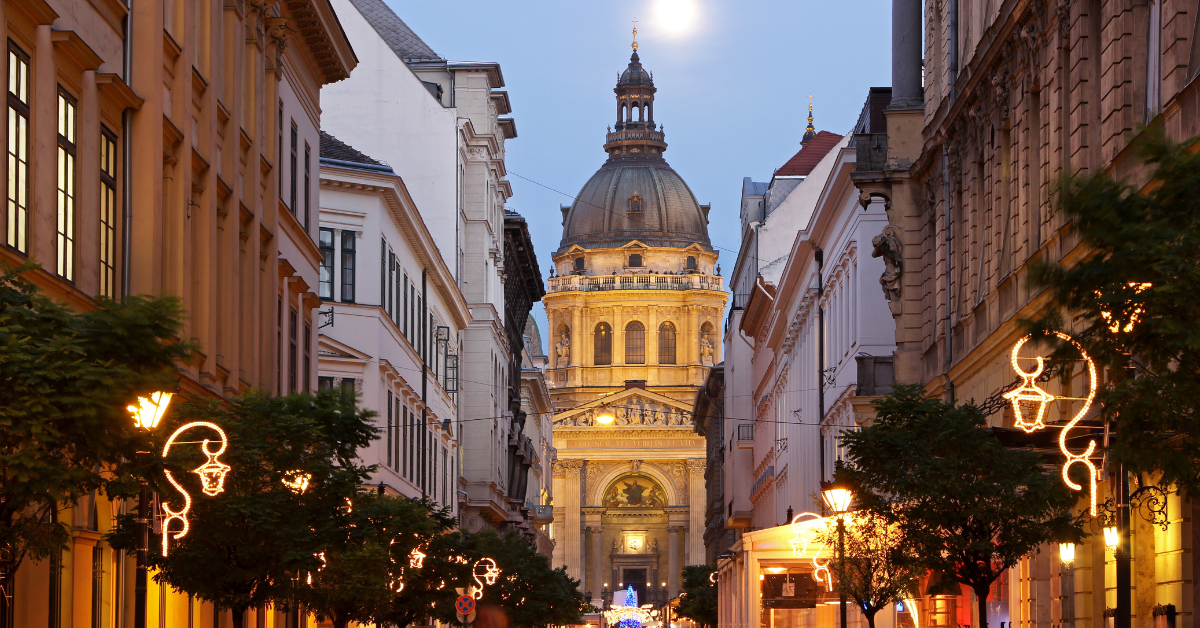In the first half of 2025, tourist accommodation in Hungary hosted nearly 8.2 million guests, accounting for 18.9 million overnight stays. Guest numbers were 7.8% higher, and overnight stays 4.5% higher, than a year earlier. Hotels accounted for 57% of guests and 55% of overnight stays. Yet these impressive first-half figures should be viewed as part of broader trends in recent years. Tourism can contribute to GDP growth through several channels. The rise in overnight stays directly increases the value added of the accommodation and hospitality sector. In addition, the multiplier effect of tourist spending – on transport, retail, cultural services and leisure activities – generates further demand in other parts of the economy. Foreign visitors’ expenditure also improves the services balance of the current account, strengthening the country’s foreign-currency position.
According to data from the Central Statistical Office, the sector has yet to fully recover from the impact – measured in overnight stays – of the COVID-19 pandemic in 2020-21 and the energy crisis of 2022, despite a rebound in domestic spending and a surge in inbound tourism. In 2019, the capacity of commercial accommodation was 12% higher than in 2010, while the number of overnight stays was 61% higher. After the sharp fall in 2020 and the partial rebound in 2021-22, guest traffic grew at an average annual rate of around 4% over the subsequent two-and-a-half years – enough to reach only 90% of the 2019 level. Assuming a similar pace, the sector is expected to return to its pre-COVID level by 2028. The latest GKI economic sentiment index for accommodation services supports the prospect of continued medium-term growth.
Trends in commercial accommodation capacity and guest nights, 2010-2025 (2010 = 100)
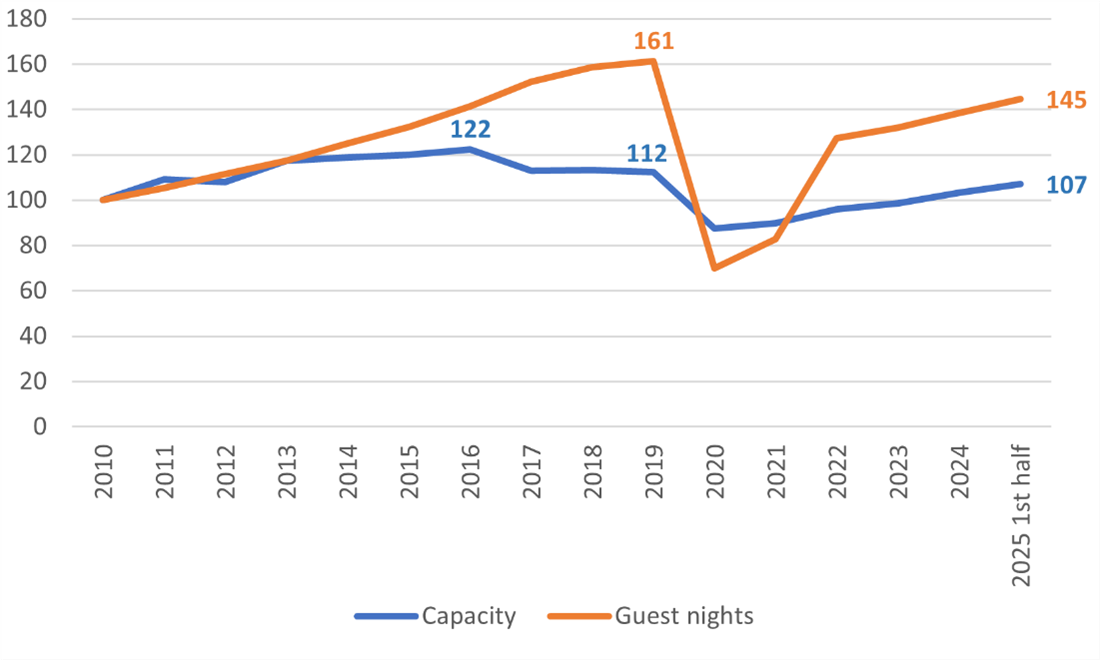
Source: KSH, GKI calculation
Since 2021, the sector’s recovery has been driven largely by inbound tourism, with foreign visitors accounting for 83% of the growth in overnight stays during this period. In the decade before COVID, both the number of foreign trips to Hungary and the days spent in the country rose dynamically. Following the partial rebound in 2021-22, however, growth has been more subdued. Even so, inbound tourism remains below its 2019 peak, with both the number of trips and days spent still 17% lower.
Trends in foreign visitors’ trips to Hungary and days spent, 2010-2024 (millions)
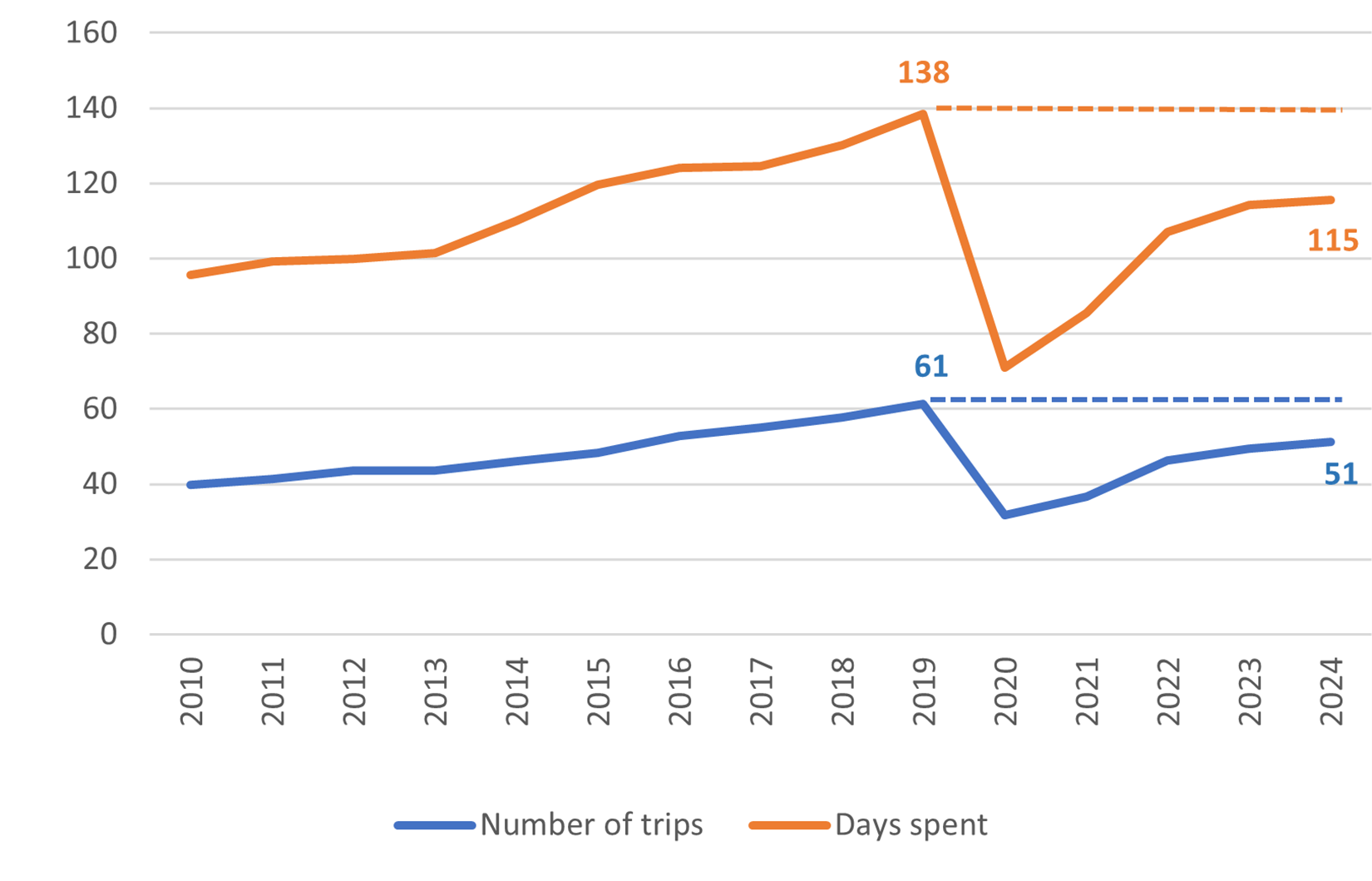
Source: KSH, GKI calculation
Spending has been a different story. By 2024, foreign tourists’ expenditure in Hungary had risen to 2.8 times its 2010 level, driven mainly by rapid growth in the three years after COVID. By the end of this period, spending had broadly returned to the trend seen between 2010 and 2019. In 2025, the sector is expected to reach its 2019 level even in real terms – stripping out inflation – closing the eight-percentage-point gap that remained in 2024. Per capita spending in real terms was 11% higher in 2024 than in 2010, for the per-day measure, the increase was 26%. This equates to an average annual rise of 1.9% over the 14-year period, accelerating to 3% a year after 2019. Even so, growth over the past three years has shown a decelerating trend, suggesting that the positive effects on the wider economy may also be fading.
Trends in foreign visitors’ spending in Hungary, 2010-2024 (2010 = 100%)
total
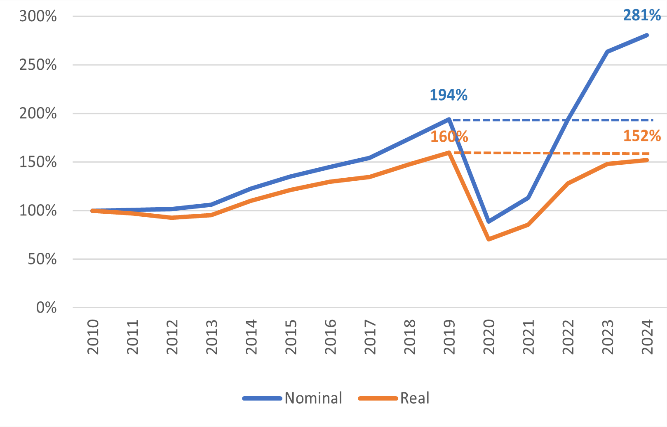
per capita and per day
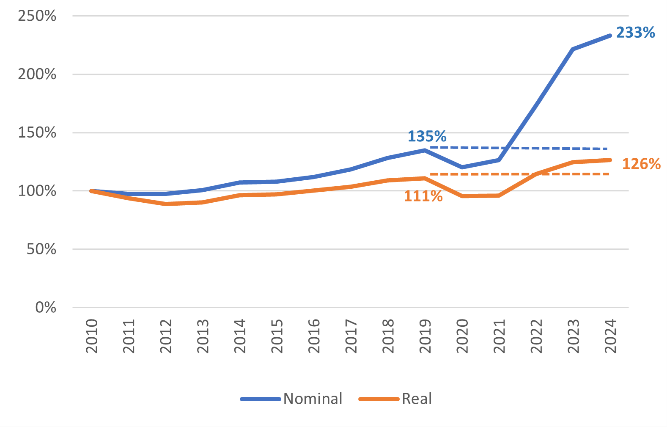
Source: KSH, GKI calculation

